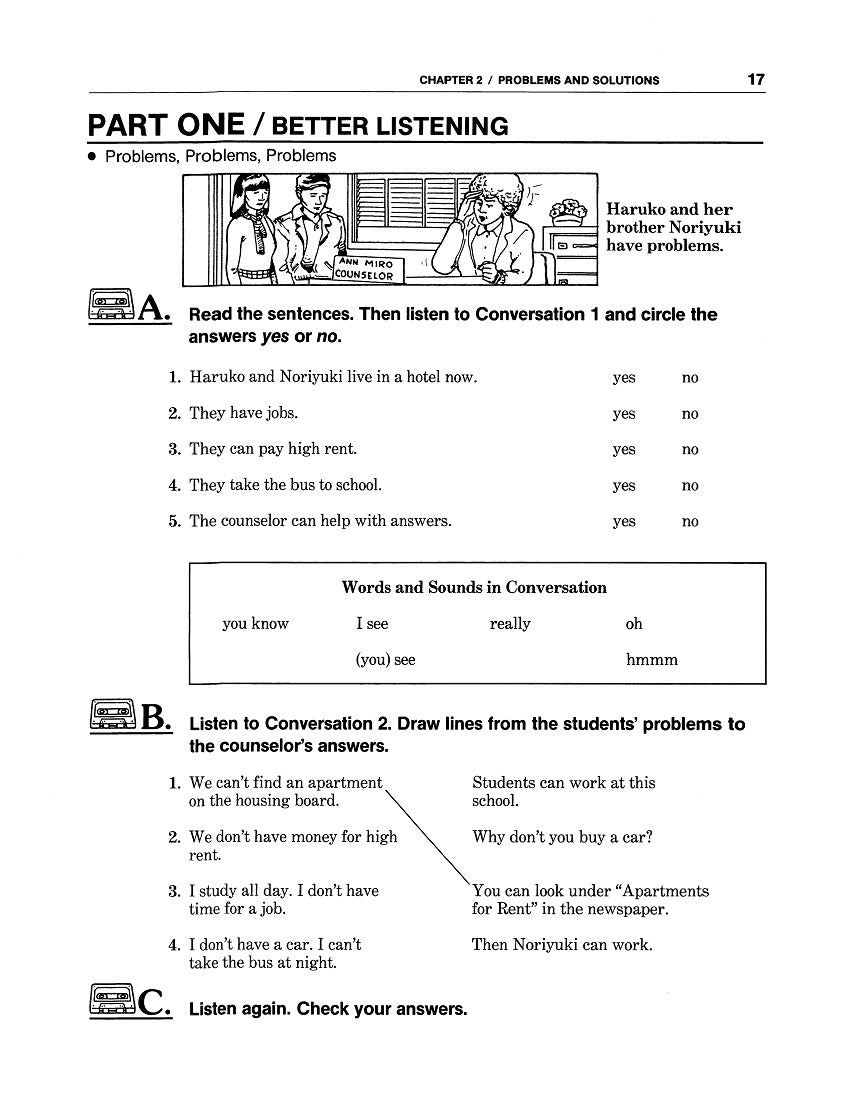Work/Life English
E-05.02 Continue Oral-Skills Instruction Describing & Solving Problems
E-05.02 Continue Oral-Skills Instruction Describing & Solving Problems
English in Everyday Life: Problems & Solutions
WorkLife English: Competency-Based Listening/Speaking, Book 2 Chapter 2. Tapescript
10 + 2 = 12 pp
Who It’s For: American-English (Teachers & Helpers of) High Beginning & Above Students Still “Getting Into” Listening Strategies, Pronunciation Exercises, Group & Pair Tasking, & Oral-Skills Activities That Are “Competency-Based”
Why It’s Useful: Like Chapter 1 (E-05.01) of WorkLife English: A Competency-Based Listening/Speaking Book 2: English in Everyday Life, Chapter 2 contains an Opener, Vocabulary, and four Parts—two of which are based on prerecorded Conversations (the texts of which appear in attached AudioScript segments). Pronunciation sections aim attention at (Complex) Vowels + (Ordinal) Numbers. In Activities, text users converse about “Problems & Solutions,” the main theme of E-05.01. While doing so, they fill in Calendars with plans and make appointments.
What You’ll Do:
[1] In the page 15 Opener, notice that the instructional aims of the material are to help learners attain these Competencies: Understand & Describe Problems; Suggest, Accept, & Reject Solutions; Express Understanding; Use Calendars for Scheduling. Grammar in Focus topics are “the Simple Present” / “Kinds of Nouns.” On the Vocabulary page, there are illustrations to match with sentences about problems.
[2] On pages 17-18, speakers discuss common everyday “problems”—housing, money, studies, transportation. Show that you understand the Audio by responding True or False to comprehension statements. Notice some “Words & Sounds” typically inserted into Conversations. Match problem descriptions to suggested solutions.
[3] In Part Two / Pronunciation (pages 18-19), hear a “Schedule for a Week” in which the Complex Vowels  and Ordinal Numbers predominate. To improve your ability to enunciate clearly, repeat and practice words / sentences with these.
and Ordinal Numbers predominate. To improve your ability to enunciate clearly, repeat and practice words / sentences with these.
[4] Part Three / Listening & Speaking Skills Audio contains typical exchanges working people might have when trying to find a time and place to get together. At first, you / your students may or may not “hear” the insertion of little words like a / an / the in fluent dialog, but eventually, you / they might. For real-life practice, (participants) make appointments with classmates to enter into your / their social “Calendar.”
[5] Part Four / Communication gets pairs of learners together in (guided) dialogs about (typical or real) problems they have and how to solve them.
Couldn't load pickup availability










